Figures & data
Figure 9. Average survival function, price information only, homoscedastic specification.
The figure shows the average (over 250 possible histories of the variable price) survival function (survival with a variable-price contract) for different fixed prices based on the model specification which includes price information only and allows for information discounting.
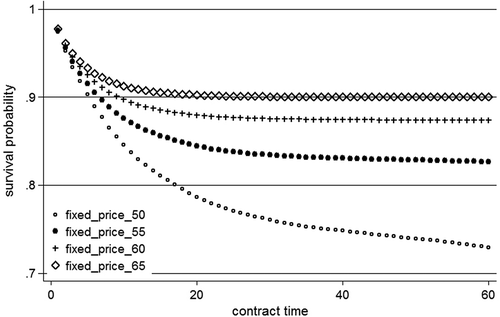
Figure 1. Number of Swedish households on each type of contract and price per kWh.
One SEK is roughly 0.1 Euro. Fixed-price contract refers to contracts with prices fixed for a year or longer (typically up to three years), and variable-price contract refers to contracts with prices varying by month. See footnote 1 for other type of contracts available to Swedish households. In addition to the price per kWh, households pay for transmission, green certificate and taxes. These costs (which are not included in the figure above) amounts to roughly 0.5 SEK/kWh, plus a fixed annual transmission fee varying between 1500 and 15000 SEK depending on the required amperage. These additional costs are identical for both type of contracts. The two vertical lines at June 2010 and February 2012 represents the time period during which households in the sample start their variable-price contract, as explained in Section 3. The households in the sample are then followed over time until June 2014.
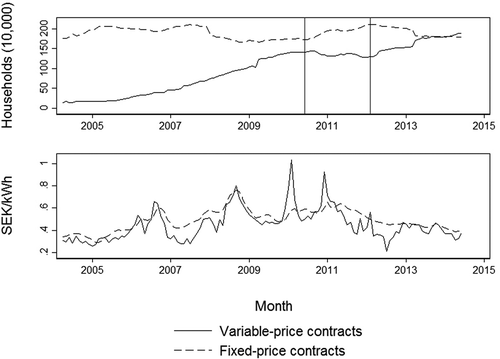
Figure 2. Sign of log-likelihood ratio, Equation (13).
The two figures show how the sign of the log-likelihood ratio, given in (13), can vary across regions of the plane for distinct values of the parameters. The shaded area in each case indicates the region in the plane where the log-likelihood ratio is positive, i.e.
increases the posterior odds in favour of
. The parameters for the regions on the left hand pane are:
and
. To produce the right hand pane, the parameters are identical except for
and
.
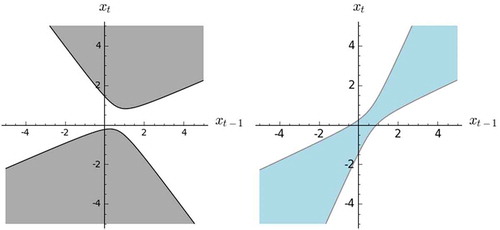
Figure 3. Log-odds, for
,
, Equation (8).
Assuming that the first two realisations are and
, the figure shows how the log-odds
, changes with
. The other parameters to define the two curves are:
, and
.
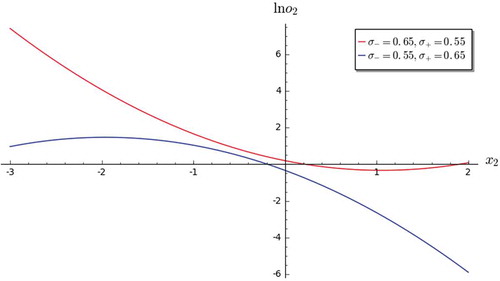
Table 1. Summary statistics.
Figure 4. Seasonally adjusted temperature for Stockholm and Umeå.
The figure shows seasonally adjusted temperature (in degrees celsius, from month average) for Stockholm, located in the centre of Sweden and Umeå, located in the north of Sweden.
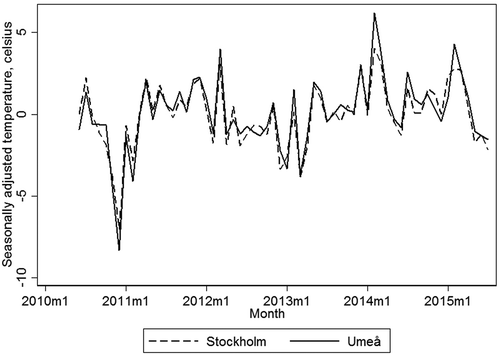
Figure 5. Seasonally adjusted log price differential and number of switches per month.
”Switches to fixed-price contract” refers to switches within the same supplier to a fixed-price contract, ”Switches to unknown” refers to switches to another retailer, and ”Entries” refers to number of new variable-price contracts per month. Our sample only includes households starting a variable-price contract between June 2010 and February 2012, so number of entries in the sample are zero after February 2012. ”Price differential” is the seasonally adjusted log price differential between the variable price and the fixed price..

Table 2. Estimation summary.
Figure 6. Kaplan-Meier survival estimate.
The figure shows the Kaplan-Meier estimator for the proportion of households remaining on variable-price contracts over time.
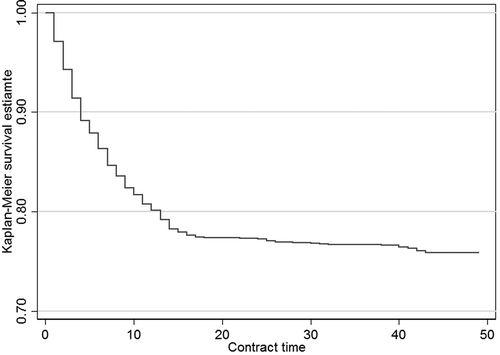
Figure 7. Average survival vs. history specific survival function.
The figure shows the average (over 250 possible histories of the variable price, continuous line) survival function (survival with a variable-price contract) at price öre/kWh against the survival function for 15 distinct variable price histories (dotted lines) based on the model specification which includes price information only and allows for information discounting.
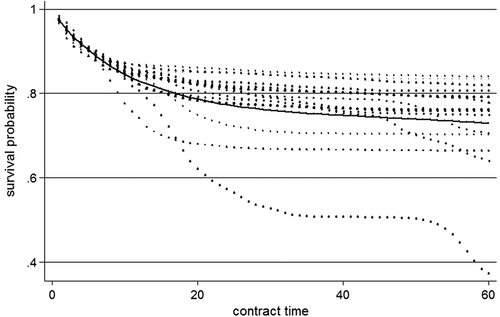
Figure 8. Average survival function, price and temperature information, heteroscedastic information.
The figure shows the average (over 250 possible histories of the variable price) survival function (survival with a variable-price contract) for different fixed prices based on the model specification which includes price and temperature information and allows for information discounting.

Figure A1. Sign of log-likelihood ratio, Equation (A3).
The two figures show how the sign of the log-likelihood ratio, given in Equation (A3), varies across regions of the plane. The dotted and the dashed lines are the limits of the regions. In both figures, on the left (resp. right) of the dotted line the elasticity
is negative for all values of
if
(resp.
).

Table A1. Parameter estimates for specifications with univariate homoskedastic information (spec 1, 2 and 3) and bivariate homoskedastic information (spec 3, 4 and 5). 1.
Table A2. Parameter estimates for specifications with heteroskedasticity.
Table A3. Autoregressive models, () variable price.
